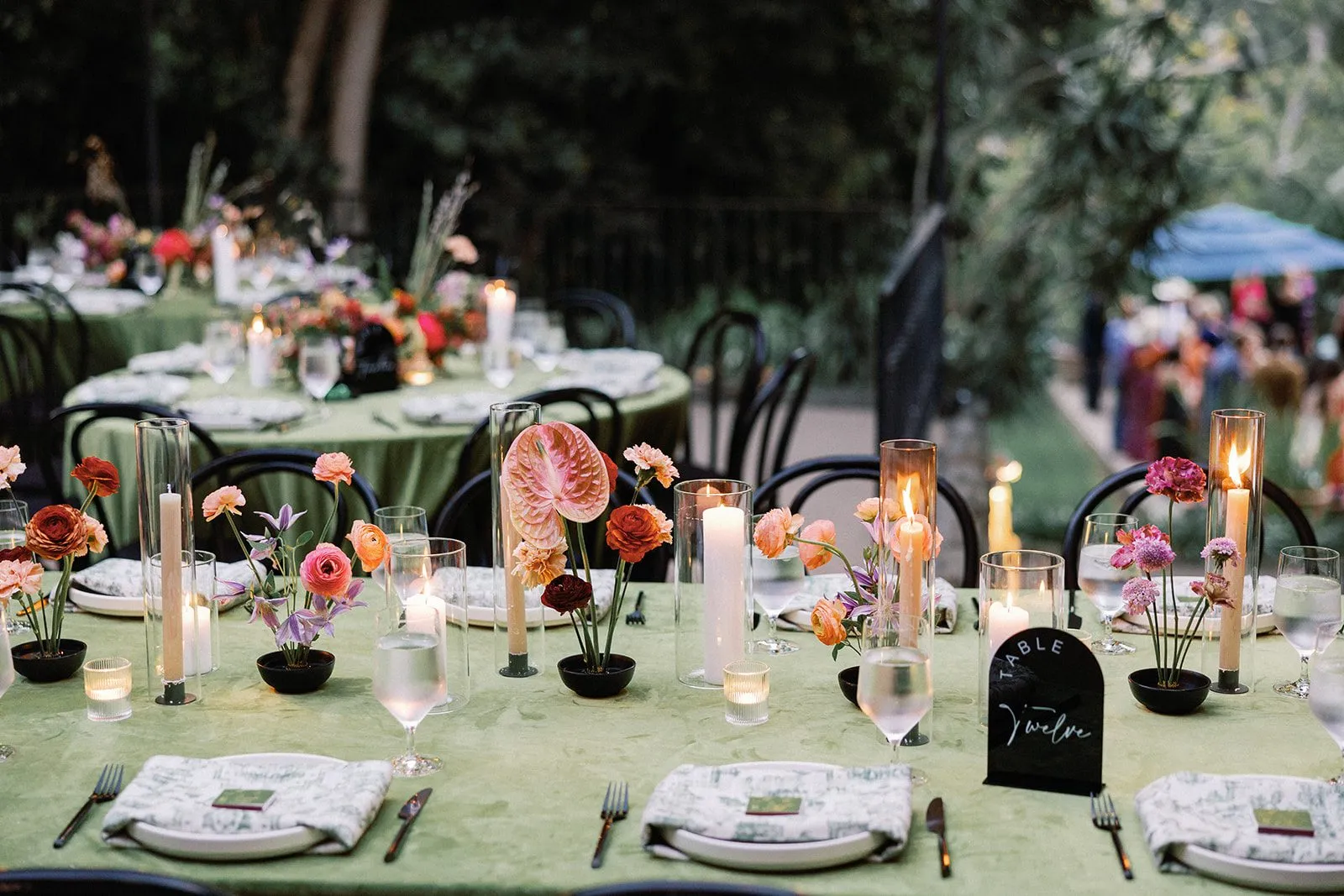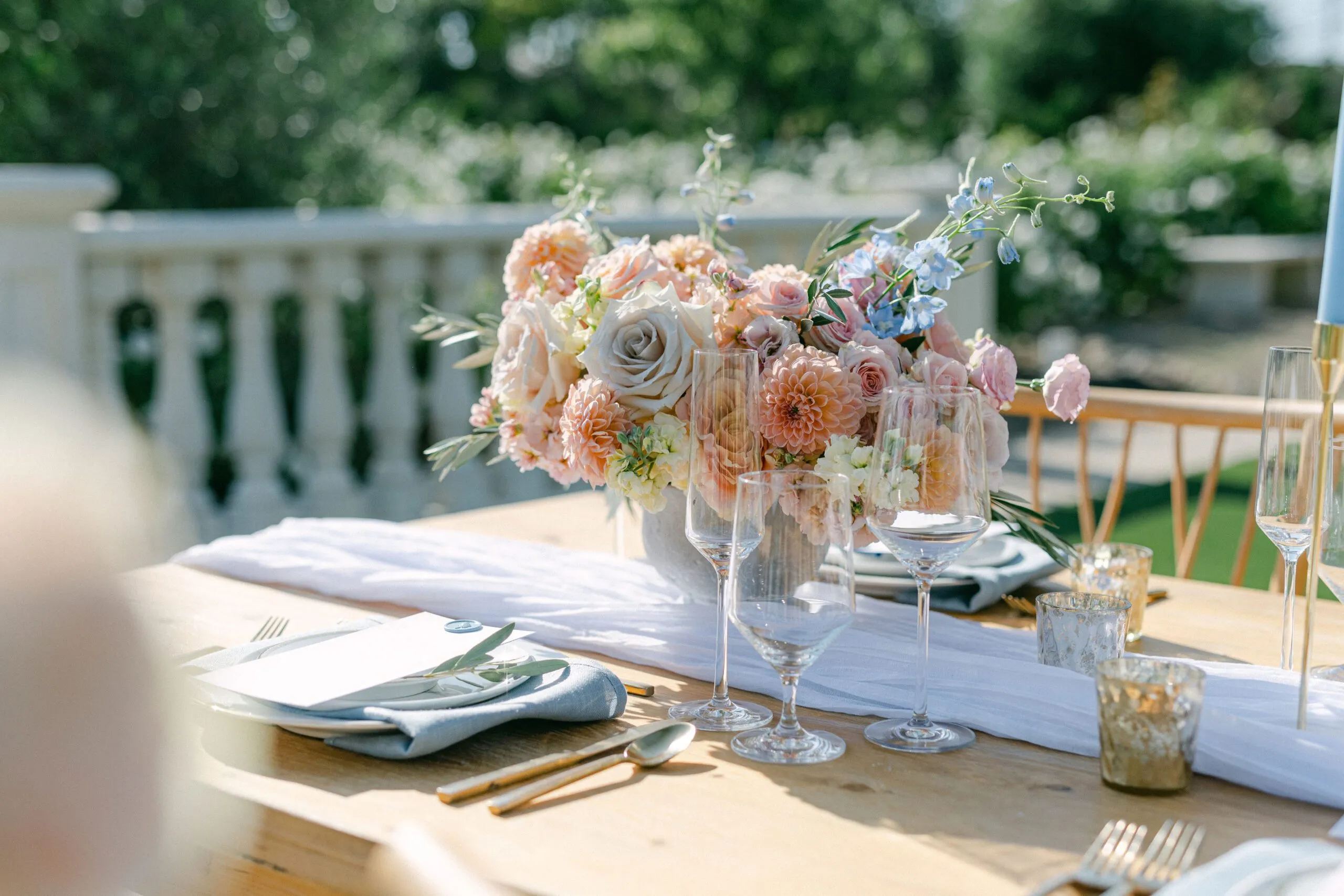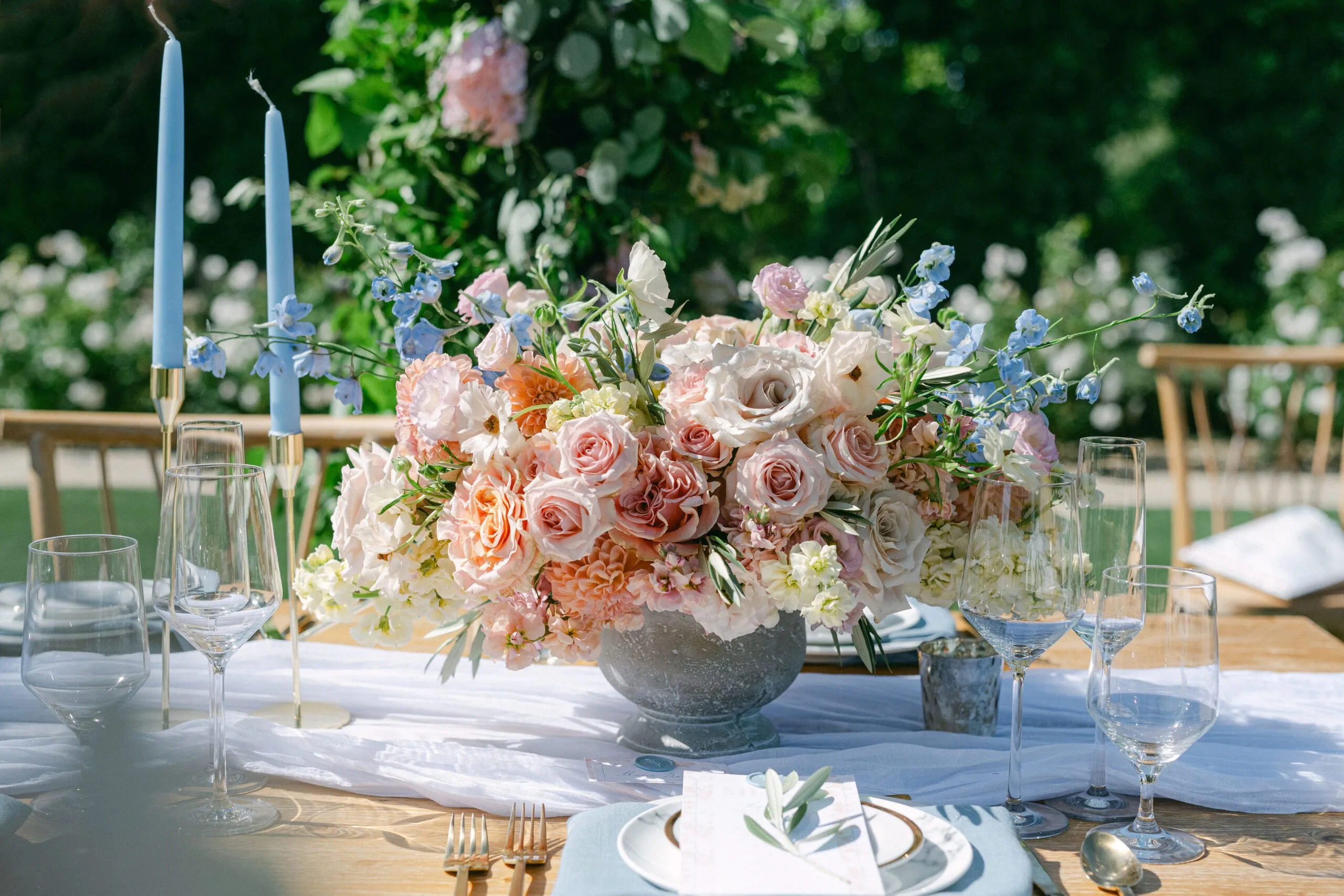Key Takeaways
- Mixing and matching tableware involves complementary colors, themes, and material variations for unique settings
- Layering different styles and balancing proportions create visually appealing and harmonious table settings
- Incorporating personal touches and experimenting with layouts enhances the dining experience
- Proper cleaning, storage, and rotation techniques ensure longevity of mixed tableware collection
Understanding the Basics of Mixing and Matching Tableware

Mixing and matching tableware involves identifying complementary colors and patterns, choosing a theme, and exploring material variations. This approach allows for creative combinations of elements like saucers and plastic furniture. By understanding these basics, event planners can create unique, stylish table settings that captivate guests and enhance the overall dining experience.
Identifying Complementary Colors and Patterns
Identifying complementary colors and patterns is key to creating a harmonious table setting. Event planners can start by selecting a base color, such as the crisp white of bone china, and build upon it with accent pieces. For example, pairing a classic white dinner plate with a colorful pasta bowl or a uniquely patterned salad plate can add visual interest. When selecting glassware, consider how different wine glass styles can complement the overall color scheme while maintaining functionality for various types of wine. Don’t forget to incorporate small details like salt cellars or napkin rings that tie into the chosen palette, creating a cohesive look in the kitchen and dining area.
Choosing a Theme for Your Tableware
Selecting a theme for tableware sets the foundation for a cohesive and visually appealing table setting. Event planners can choose themes based on color schemes, patterns, or even specific types of dishes. For instance, a rustic theme might incorporate earthenware bowls for soup and cereal, while a modern theme could feature sleek, minimalist mugs for coffee or tea. Mixing various cake plates with complementary designs can add depth to the overall aesthetic. The key is to maintain a balance between variety and harmony:
| Theme | Bowl Type | Mug Style | Cake Plate |
|---|---|---|---|
| Rustic | Earthenware | Handcrafted | Wooden |
| Modern | Geometric | Sleek | Glass |
| Vintage | Floral pattern | Tea cup | Porcelain |
Exploring Material Variations for Unique Looks
Exploring material variations enhances the visual appeal and tactile experience of table settings. Event planners can combine Wedgwood china with handcrafted pottery pieces, creating a dynamic interplay of textures. A sleek silver tray can contrast beautifully with rustic wooden butter dishes, while a crisp linen tablecloth provides a sophisticated backdrop for diverse tableware elements. This approach allows for creative expression and personalization, resulting in unique and memorable dining experiences.
Techniques for Mixing and Matching Tableware

Mastering techniques for mixing and matching tableware elevates event aesthetics. Layering different styles effectively combines plates, linens, and porcelain to create visual depth. Creating balance with proportions ensures harmonious table settings for every meal. Mixing formal and casual elements, like pairing champagne glasses with rustic dishes, adds interest and personality to the dining experience.
Layering Different Styles Effectively
Effective layering of different styles creates visual interest and depth in table settings. Event planners can start with a textured placemat as the foundation, then layer a stoneware dinner plate with a contrasting salad plate in vibrant colors or patterns. For added dimension, they might incorporate a small clay dish for condiments or garnishes. Folding a napkin in an intricate style and placing it atop the plates adds a finishing touch to this layered approach, resulting in a sophisticated and engaging table setting.
Creating Balance With Proportions
Creating balance with proportions is essential when mixing and matching tableware. Event planners can achieve harmony by pairing large dinner plates with smaller, complementary side dishes and glasses. A well-proportioned table setting might include a stainless steel wine cart positioned near elegant chairs, offering easy access to various wine glasses. Balancing the visual weight of different elements, such as combining delicate glassware with substantial stoneware plates, creates a cohesive and appealing tablescape. Consider these key aspects when balancing proportions:
- Vary plate sizes for visual interest
- Match glass heights to plate dimensions
- Use serving pieces as focal points
- Incorporate different textures and materials
- Arrange items to create a sense of flow
Mixing Formal and Casual Elements
Mixing formal and casual elements in table settings creates a dynamic and inviting atmosphere. Event planners can combine elegant crystal stemware with rustic stoneware plates, or pair fine china with casual flatware. This approach allows for creative expression in menu presentation, using a mix of formal silver spoons alongside more relaxed wooden serving utensils. The key is to strike a balance that feels intentional and cohesive:
| Formal Element | Casual Element | Combined Effect |
|---|---|---|
| Crystal wine glasses | Ceramic plates | Elegant yet approachable |
| Silver cutlery | Linen napkins | Refined with a relaxed touch |
| Fine china cups | Wooden serving boards | Sophisticated and rustic blend |
Inspiring Ideas for a Unique Table Setting

Unique table settings can transform dining experiences. Seasonal themes offer fresh inspiration, while incorporating family heirlooms adds personal touches. Exploring unconventional color combinations creates visual interest. Event planners can mix china patterns, use steel serving pieces, and consider dishwasher-safe options for convenience. A well-curated tableware selection, like items in a shopping cart, allows for versatile drink pairings and memorable meals.
Seasonal Themes to Consider
Seasonal themes offer inspiring opportunities for unique table settings. Event planners can transform dining rooms with autumnal hues, incorporating amber-colored pitchers and rustic candle holders. For spring, delicate Japanese-inspired patterns on plates paired with pastel cocktail glasses create a fresh ambiance. Summer tablescapes might feature vibrant, tropical-inspired tableware, while winter settings could embrace rich, deep colors and metallic accents.
Incorporating Personal Touches With Family Pieces
Incorporating family pieces into table settings adds a personal touch and creates a unique atmosphere. Event planners can showcase cherished heirlooms like a vintage heat-resistant platter alongside modern tableware, blending nostalgia with contemporary style. This approach not only honors family history but also sparks conversation among guests, making the dining experience more memorable and intimate.
Unique Color Combos to Try
Unique color combinations can elevate table settings from ordinary to extraordinary. Event planners can experiment with unexpected pairings like deep navy and coral, or sage green and soft lavender. These bold choices create visual interest and set the tone for memorable dining experiences. For a sophisticated look, planners might combine matte black dinnerware with gold accents, while a more playful approach could involve mixing pastel blues with sunny yellows.
Practical Tips for Successful Mixing and Matching
Successful mixing and matching of tableware requires thoughtful planning and execution. Selecting a base color provides a foundation for cohesive designs. Avoiding common mistakes ensures harmonious combinations. Experimenting with layouts maximizes visual impact. These practical tips help event planners create stunning table settings that impress guests and enhance dining experiences.
Selecting a Base Color to Build Upon
Selecting a base color serves as the foundation for a cohesive table setting. Event planners often choose neutral tones like white, cream, or gray as a versatile starting point. This approach allows for easy incorporation of accent colors through smaller pieces such as salad plates, napkins, or centerpieces. By establishing a base color, planners create a unified look while still having the flexibility to experiment with various color combinations and patterns.
Avoiding Common Mistakes in Tableware Combinations
Event planners can avoid common mistakes in tableware combinations by maintaining a cohesive theme and balancing patterns and textures. They should limit the number of different patterns to prevent visual clutter and ensure that colors complement rather than clash. Planners must also consider the functionality of each piece, ensuring that the tableware not only looks good but serves its purpose effectively.
Experimenting With Layouts for Maximum Impact
Experimenting with layouts maximizes the visual impact of mixed and matched tableware. Event planners can create dynamic table settings by varying the placement of different elements, such as offsetting charger plates or alternating napkin folds. They might also explore asymmetrical arrangements or use unexpected centerpieces to draw the eye and create interest. By testing different layouts, planners can discover unique combinations that elevate the dining experience and showcase the beauty of diverse tableware collections.
Maintaining and Caring for Mixed Tableware

Proper care and maintenance of mixed tableware collections ensure their longevity and continued appeal. This section covers best practices for cleaning various materials, effective storage methods to prevent damage, and strategies for rotating pieces to preserve styles. By following these guidelines, event planners can keep their unique tableware combinations in top condition for future use.
Best Practices for Cleaning Various Materials
Proper cleaning techniques for mixed tableware are essential for maintaining their appearance and longevity. Event planners should use gentle, pH-neutral detergents for delicate materials like bone china and crystal, while sturdier items such as stainless steel can withstand more rigorous cleaning methods. For wooden pieces, a damp cloth and mild soap suffice, followed by thorough drying to prevent warping. Regular maintenance, including prompt cleaning after use and gentle polishing, helps preserve the beauty of diverse tableware collections.
Storing Your Collection to Prevent Damage
Proper storage protects mixed tableware collections from damage and extends their lifespan. Event planners should use padded dividers or soft cloths between stacked plates to prevent scratches. Delicate items like crystal glasses benefit from individual storage in protective cases. Organizers can group similar materials together, keeping heavier pieces on lower shelves to avoid potential accidents. Regular inspection of storage areas helps identify and address any issues before they cause permanent damage to the collection.
Rotating Uses for Longevity of Styles
Rotating the use of mixed tableware styles helps maintain their longevity and keeps table settings fresh. Event planners can create a rotation schedule, alternating between different pieces to distribute wear evenly. This approach prevents the overuse of favorite items and allows less frequently used pieces to shine. By varying combinations regularly, planners can discover new pairings and keep their tableware collection vibrant and engaging:
| Week | Dinner Plates | Salad Plates | Glassware |
|---|---|---|---|
| 1 | White porcelain | Floral pattern | Crystal |
| 2 | Stoneware | Solid color | Colored glass |
| 3 | Patterned china | White porcelain | Stemless |
Conclusion
Mixing and matching tableware offers event planners a creative avenue to craft unique, stylish table settings that captivate guests and enhance dining experiences. Planners can create visually striking and personalized tablescapes by mastering techniques such as layering different styles, balancing proportions, and combining formal and casual elements. Incorporating seasonal themes, family heirlooms, and unexpected color combinations further elevates the art of table setting, allowing for memorable and engaging dining atmospheres. Proper care, storage, and rotation of mixed tableware collections ensure their longevity, enabling event planners to continually reinvent their table designs and impress clients with fresh, innovative presentations.






